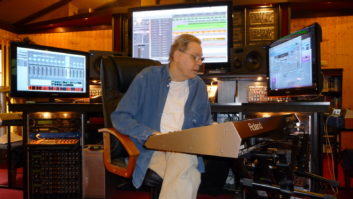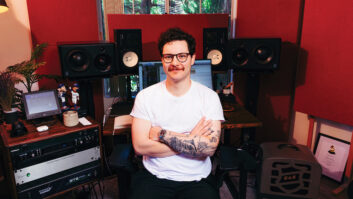Midge Ure has had an enormous influence on the music industry, not just as a member of bands like Slik, Thin Lizzy and Visage, but also as leader of Ultravox—a group that was among the first of its kind, inspiring legions of electronic-based new wave musicians around the world. Ure also co-wrote and produced the worldwide top single “Do They Know It’s Christmas” and co-organized immensely impactful charity events including Band Aid, Live Aid and Live 8 with Bob Geldof. Ure, who is more of a household name in Europe, has also pursued a successful international solo career over the years. With his latest album, Fragile, Ure is back again with his signature, atmospheric sound that remains utterly unique and never seems to fade with time.
ON OVERCOMING DOUBT:
To be absolutely honest, I didn’t set out to accomplish anything with this album. There was no grand plan, no big picture in my head. It was like a hamster on a wheel—I thought it was time to get another album out. I started working on it, and for a variety of reasons, it took forever to make. During the process, I lost my way several times. I had doubts as to whether I could do this anymore or whether I wanted to do this anymore. It wasn’t from lack of ideas, lack of intent or being lazy. I also went through a huge phase of thinking that the world doesn’t really need a new Midge Ure record. So put all of that together and hopefully there is something that is interesting when I find my way again at the end.
ON CAPTURING IDEAS:
Most of the time, you are talking about things you feel, things you’ve read, things you see on television: life experiences. I jot all these things down—a line or a sound or whatever has just come across my head. Then I figure out what to do with all this once I am settled with my toys in my project studio in front of my blank screen putting all these elements together. It is a long process when you are doing it on your own. I am not fast or quick, but I think about all the parts that went into making a piece of music—not just the chord sequence. For example, I write a bass part that fits with the melody, so it complements everything else that is done. I like to think that if you strip the vocals out, it will sound great as an instrumental because it is structured nicely.
ON INFLUENCES:
I think I learned an awful lot when I joined Ultravox—from Billy Currie especially, who is incredibly musical. I was submerged in a situation where the people around me were very musical and extremely creative. I’ve also realized that the melodies I create are directly linked to things they used to teach me in school: for example, the Scottish Lament and the beautiful melodies that traditional Scottish music has. When you hear this played on a synthesizer or piano, it sounds Scottish, but since you are using a synthesizer, it is a sound that has never been heard before and takes on a whole different thing.
ON PRODUCTION TOOLS:
I love my technology. The problem with doing all this stuff on your own is that it is really hard to keep up. If I kept updating at the level a lot of other producer/musicians do, I would spend most of life reading about how it all works rather than creating anything. So my studio is fairly basic—it is a little one-man set-up at the bottom of my garden and I call it my ‘sonic potting shed’. I don’t need to know how complicated electronics work or why a lightbulb lights up; I just want to switch the switch and make it happen. I want to get the thing done.
ON RECORDING “VIENNA”:
When we worked with German engineer/producer Conny Plank, he spoke in textures and ambiance. We were in Rak Studios in London and played him “Vienna” for a few times so he could hear what was going on with the track before we started recording. We entered the control room and said, “What did you think?” He said, “What I hear is a man sitting at a piano in an empty ballroom and he is tired. He has played the same melody for 40 years.” And when he recorded it, he sat there with his little box of tricks and made the piano sound exactly like he said. This fragile, distant and broken piano was exactly what he described and the hair on the back of my neck stood up when I heard it. On the other hand, Sir George Martin was very handson with an arrangement. He would spend a long time staring at the piano working on endings, or harmonies for the vocals. I sat there and multi-tracked all these vocal parts and imagined it was exactly what he would have done with The Beatles. It was a very, very musical and wonderful experience working with him.
ON TRACKING VOCALS:
I hate the process of recording vocals, because before you’ve opened your mouth, you’ve got it in your head exactly how it should sound— and sometimes it just doesn’t sound like that. On this album, there is a song called “Star Crossed”—I ended up recording that vocal track in a hotel in Germany on my laptop with a tiny Apogee USB microphone and a pair of headphones. It felt right, so I recorded it in between people walking up and down the corridor banging doors. I thought, “Maybe that’s what it’s all about. Maybe it’s about getting that moment, seeding it and once you have it, it is there forever.”







